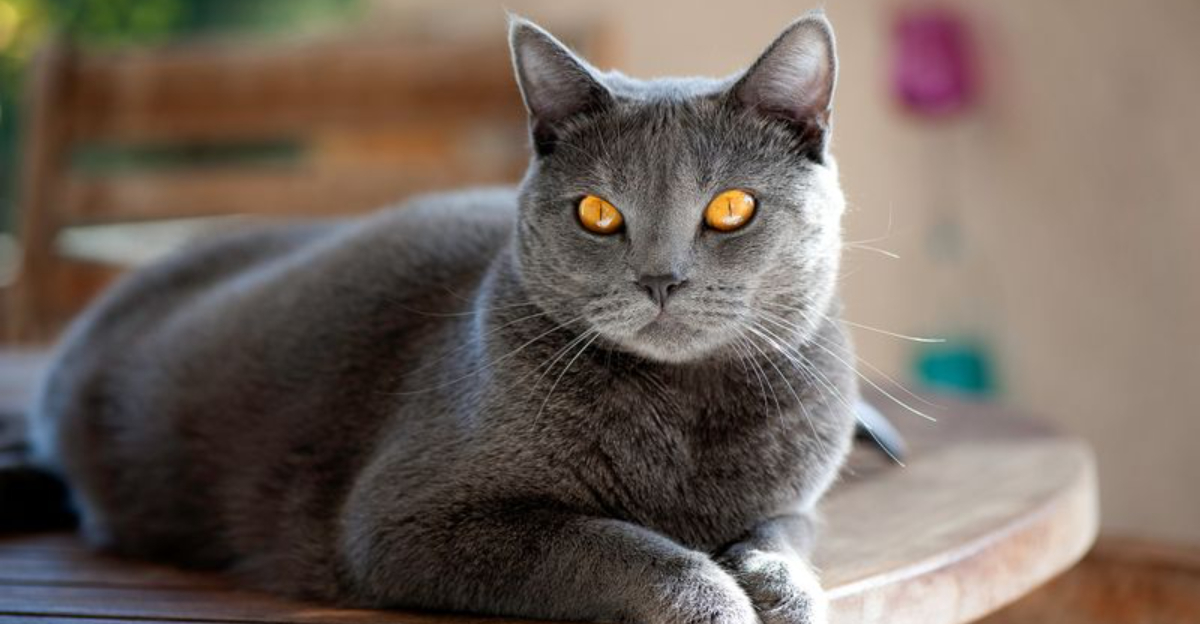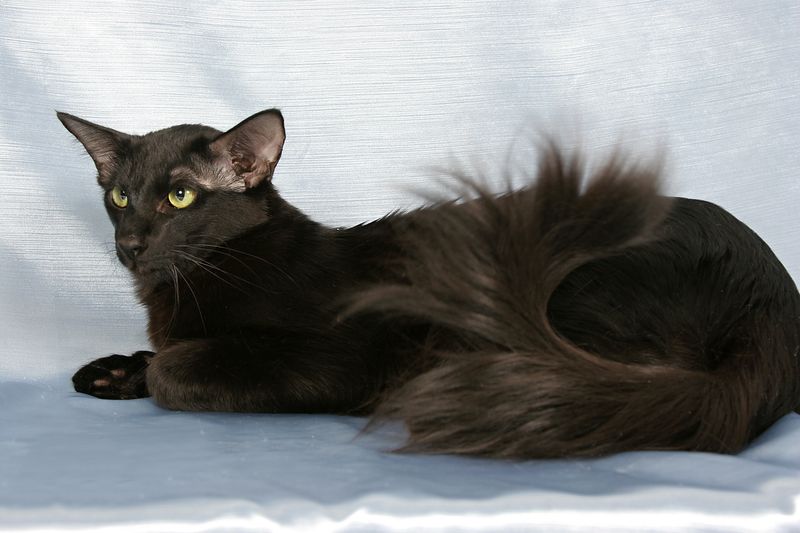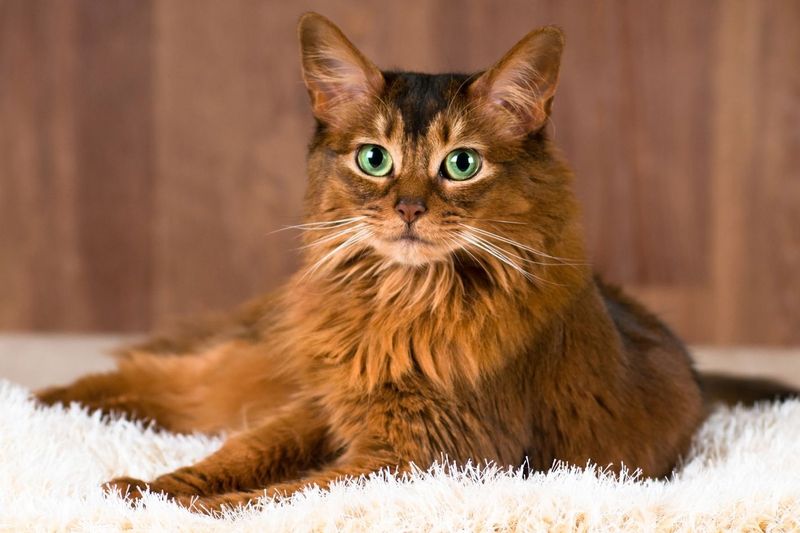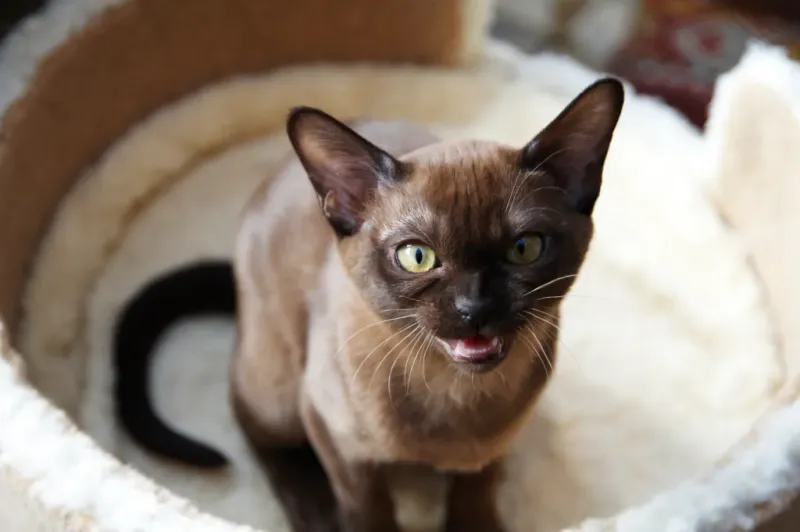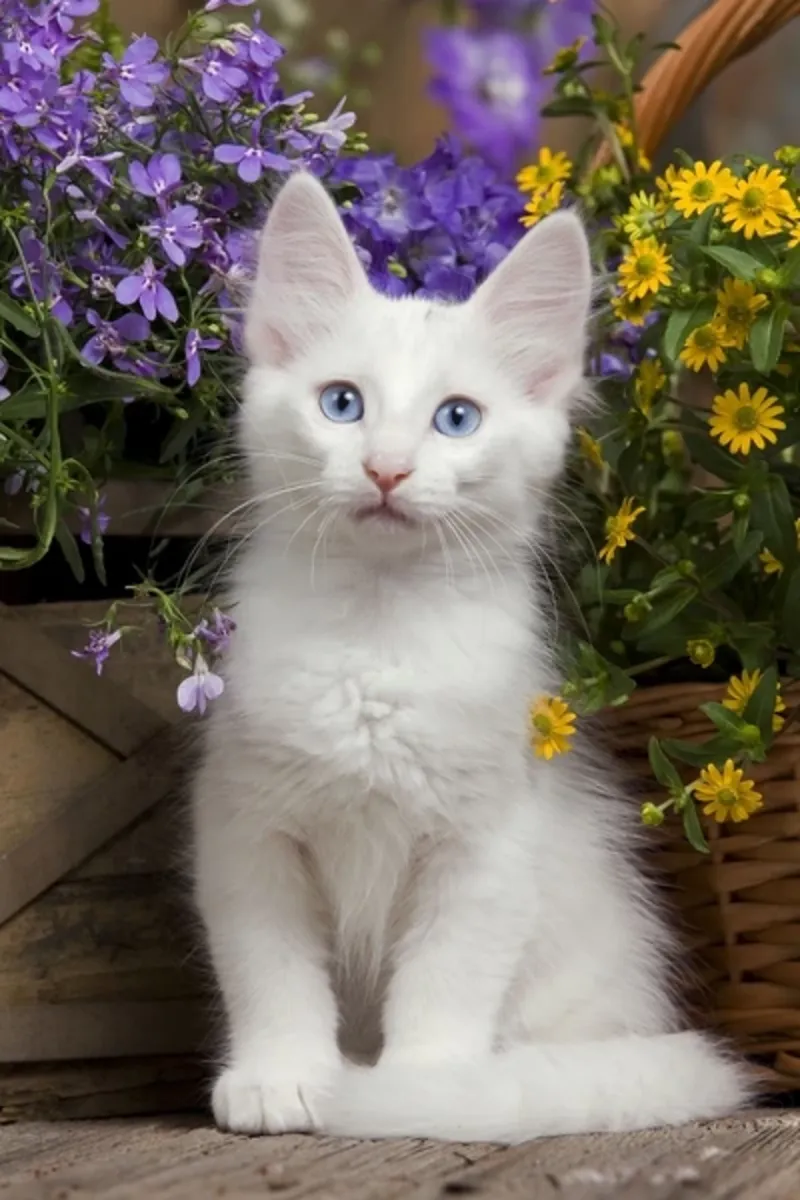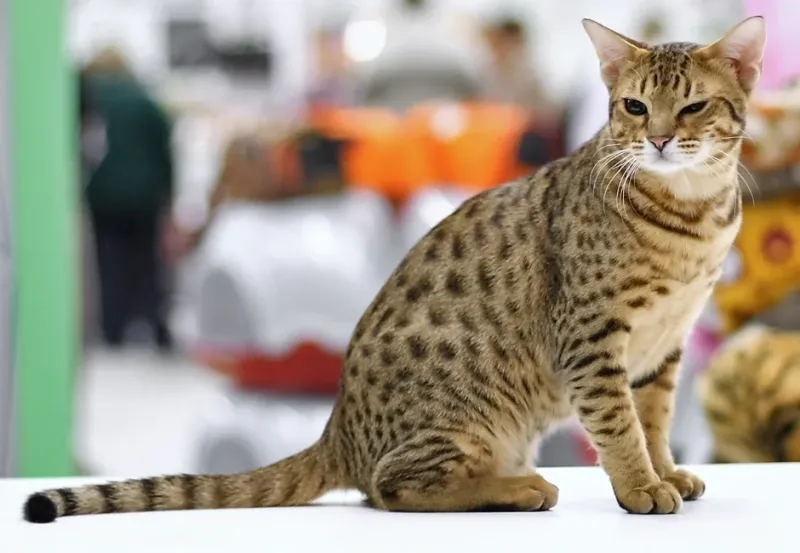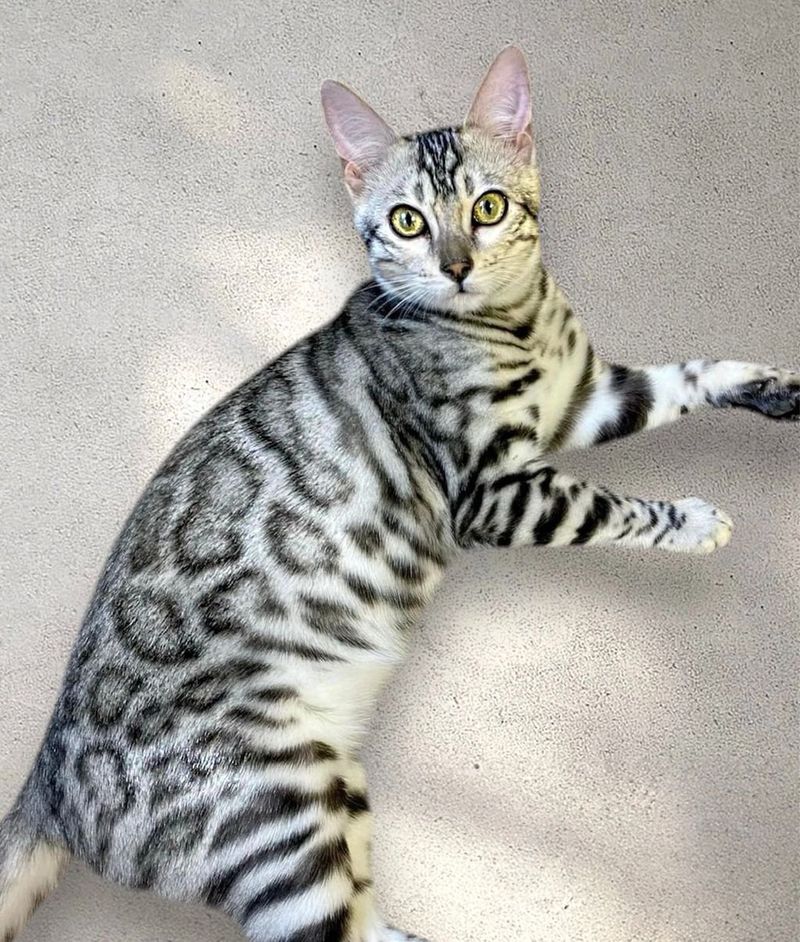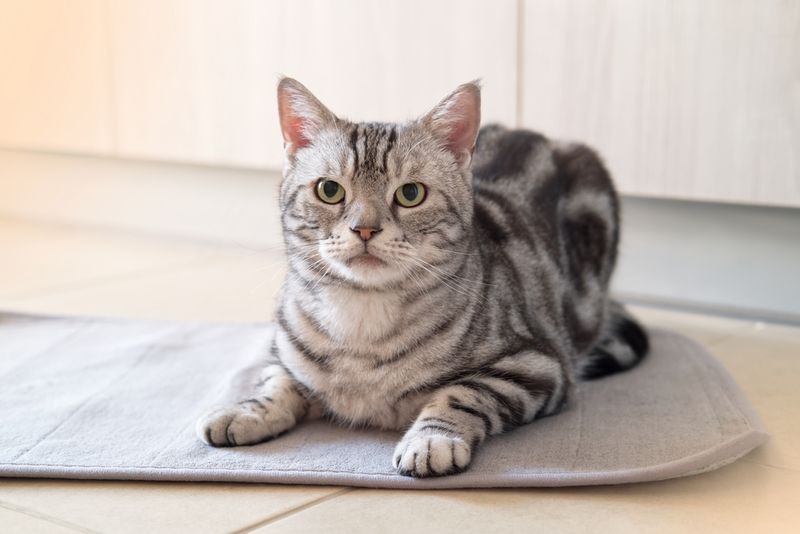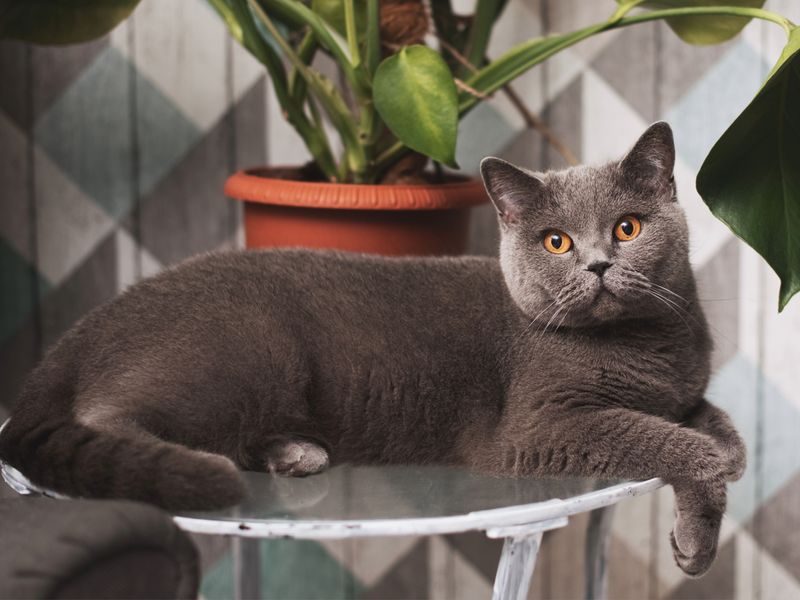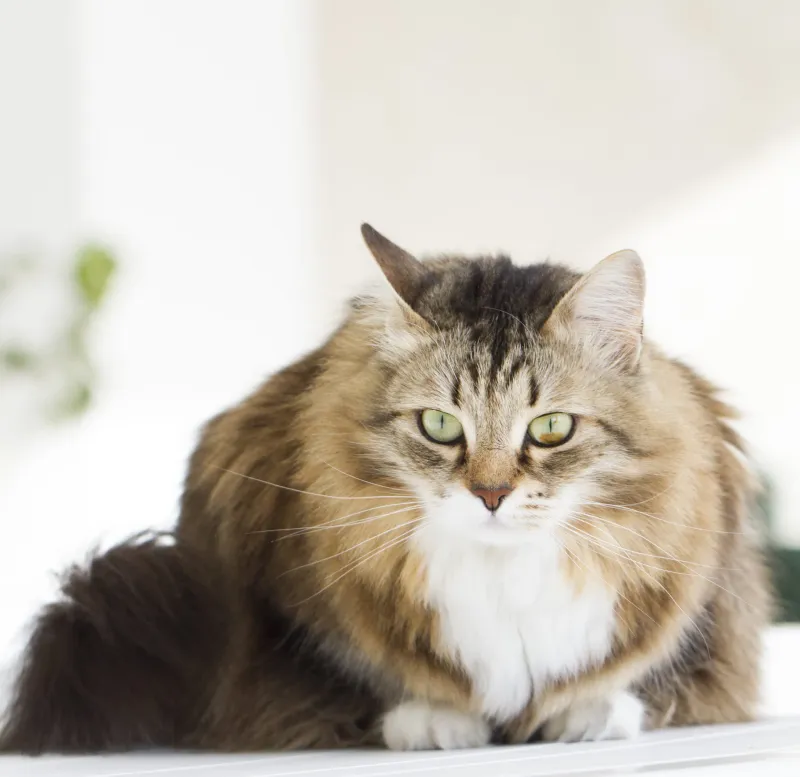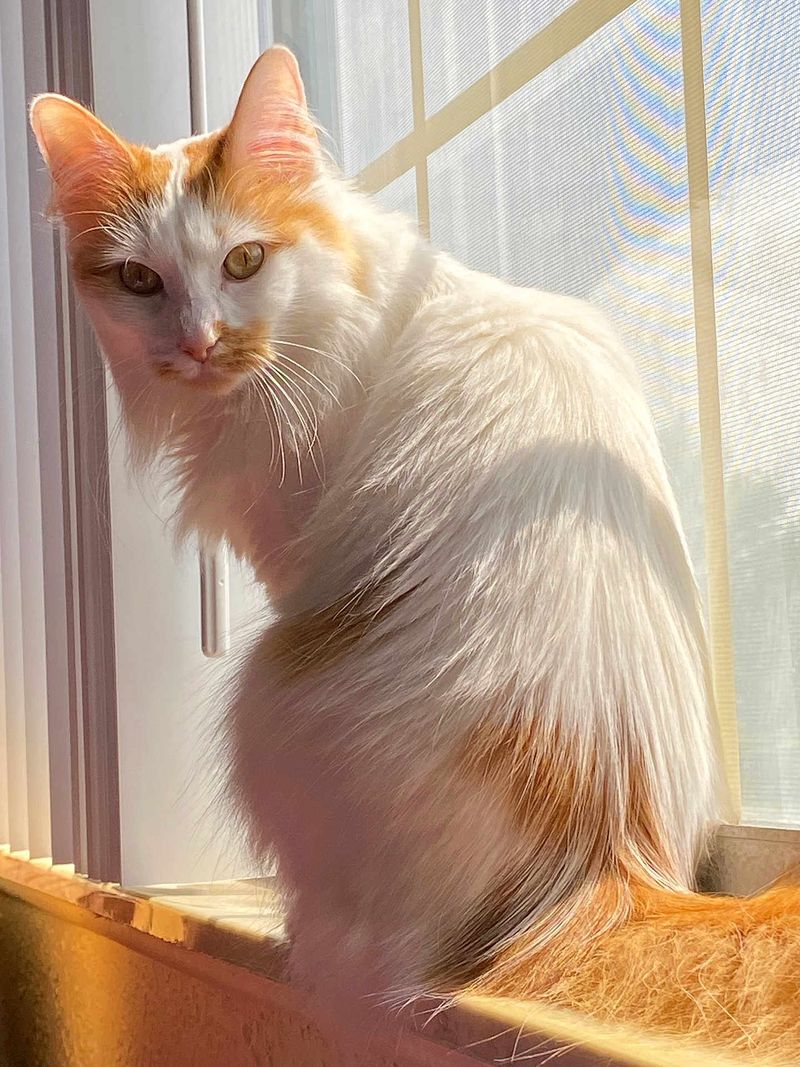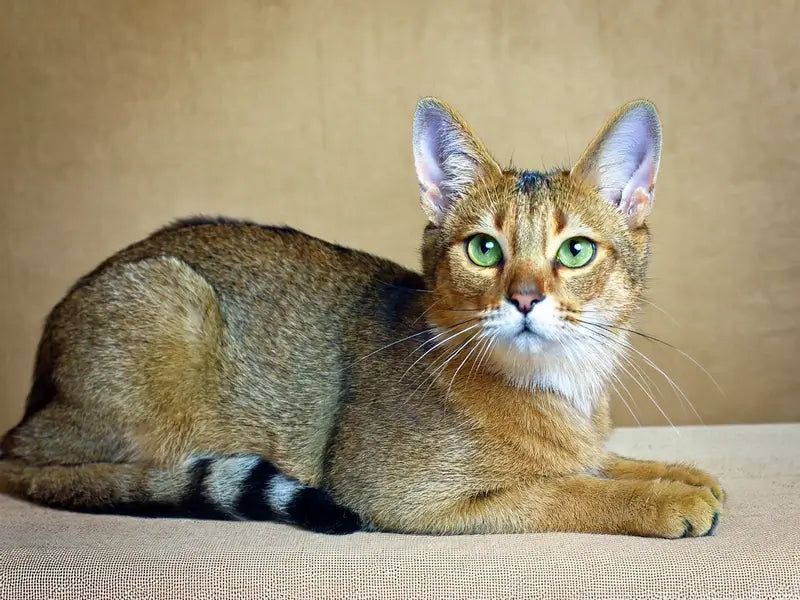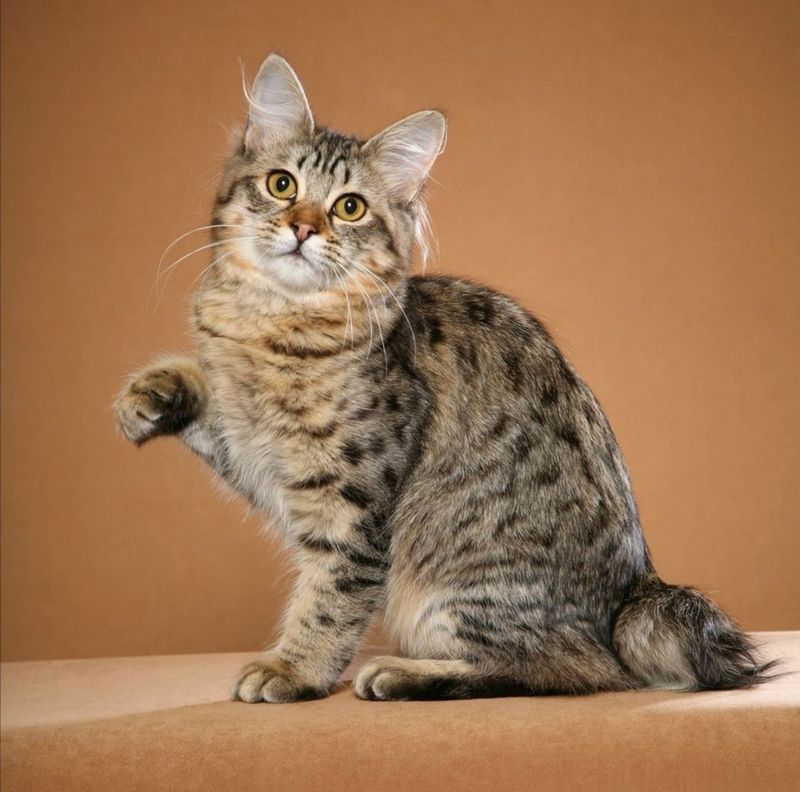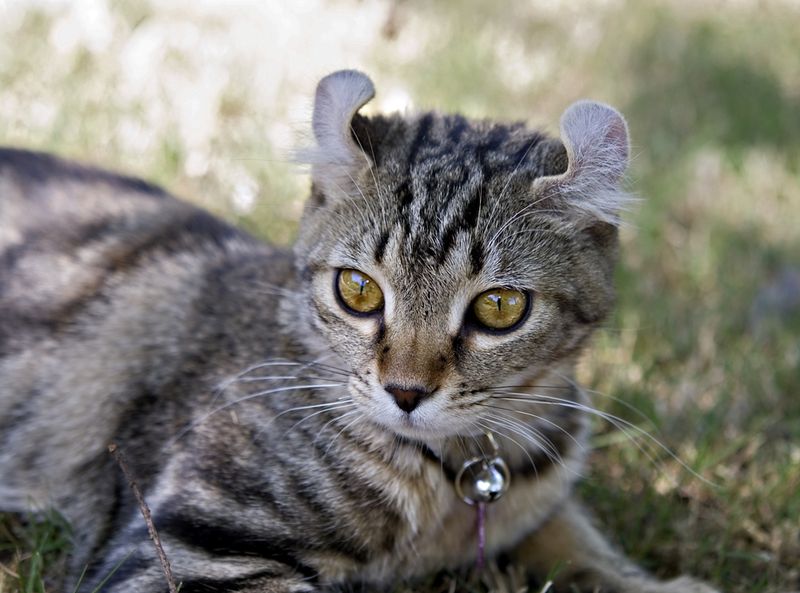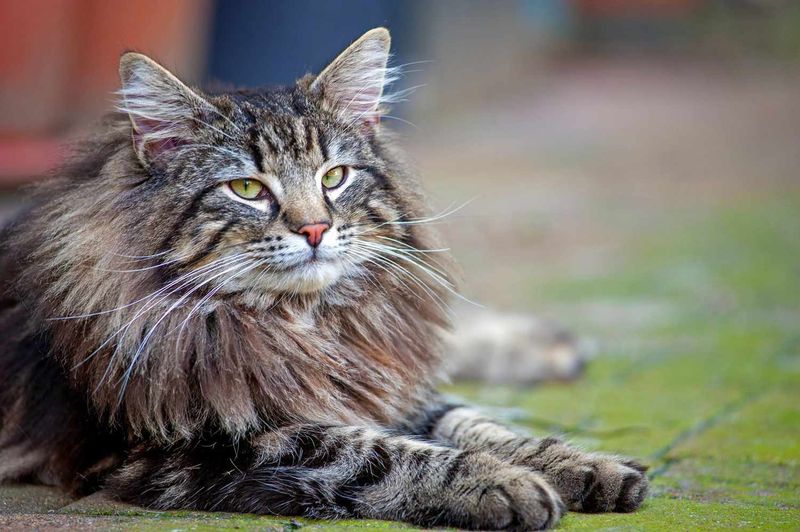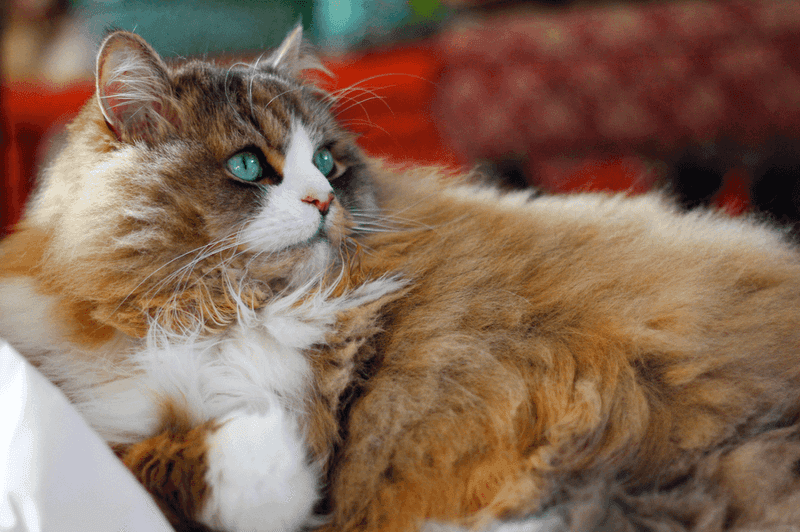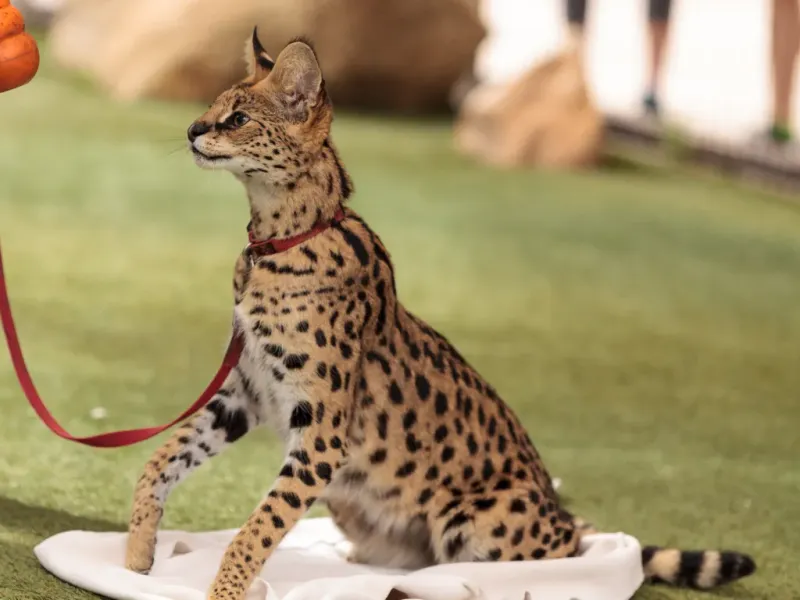📖 Table of Content:
- 20. Oriental Longhair
- 19. Somali
- 18. Burmese
- 17. Turkish Angora
- 16. Ocicat
- 15. Bengal
- 14. Chartreux
- 13. American Shorthair
- 12. British Shorthair
- 11. Siberian
- 10. Turkish Van
- 9. Chausie
- 8. American Bobtail
- 7. Highlander
- 6. Pixiebob
- 5. Norwegian Forest Cat
- 4. Ragdoll
- 3. Ragamuffin
- 2. Savannah (F2–F3)
- 1. Maine Coon
Not all domestic cats are created equal when it comes to size. Some breeds grow far beyond the average house cat, both in weight and physical presence. These felines often carry their mass with elegance, maintaining the agility cats are known for.
Large cat breeds typically have strong bone structures, muscular builds, and slow, steady growth patterns. Many are gentle in nature, earning nicknames like “gentle giants” due to their calm temperaments. Despite their size, they often form close bonds with their human families.
Whether long-haired or sleek-coated, these cats make a bold impression in any home. Their size is matched by equally distinctive traits, from affectionate natures to playful energy. Understanding their physical and behavioral characteristics helps highlight what sets them apart.
20. Oriental Longhair
Known for their slender yet surprisingly solid build, Oriental Longhairs typically weigh between 8-12 pounds. Their elegant appearance masks a substantial frame that carries more weight than you might expect at first glance.
These intelligent felines possess remarkable athletic abilities despite their size. They combine the svelte body type of their Siamese ancestors with luxurious, flowing coats that add to their regal appearance.
Oriental Longhairs form deep bonds with their families and often use their melodious voices to express opinions on household matters. Their sociable nature means they thrive on interaction and mental stimulation.
19. Somali
Somalis carry a substantial 6-12 pounds on their medium-sized frames, with males typically reaching the higher end of the weight range. Their bushy tails and ticked coats create an impression of even greater size than their actual weight suggests.
Often called ‘fox cats’ due to their bushy tails and wild appearance, Somalis descended from Abyssinians. The semi-long fur requires moderate grooming to maintain its spectacular condition.
Energetic and playful well into adulthood, these cats bring constant entertainment to their households. Their curious nature and problem-solving abilities make them excellent companions for active families looking for an engaging pet.
18. Burmese
Don’t let their medium size fool you – Burmese cats pack surprising heft into their compact frames, weighing between 8-12 pounds. Their dense muscle structure gives them a substantial feel when picked up, earning them the nickname ‘bricks wrapped in silk.’
The breed originated in Burma (now Myanmar) and was developed in the United States in the 1930s. Their glossy coats come in several colors, with the classic sable brown being most recognized.
Famously devoted to their humans, Burmese cats follow their owners from room to room and insist on being part of all family activities. Their affectionate nature and intelligence make them wonderful companions who readily learn tricks and games.
17. Turkish Angora
Turkish Angoras typically weigh between 5-10 pounds, with males reaching the upper end of the scale. Despite their delicate appearance, these cats have substantial bone structure beneath their silky coats.
Originating in the Ankara region of Turkey, these cats have been treasured for centuries. Their elegant demeanor and flowing white coats made them favorites in European royal courts, though today they come in many colors.
Athletic and agile, Turkish Angoras excel at climbing to high perches and performing impressive acrobatic feats. They form strong bonds with their chosen people and often appoint themselves as household supervisors, overseeing all family activities with keen interest.
16. Ocicat
With strong, athletic frames, Ocicats reach adult weights ranging from 9 to 15 pounds. Their spotted fur pattern closely mimics that of wild cats. The result is a powerful yet friendly feline with a distinctly untamed look.
Contrary to appearances, Ocicats contain no wild blood. They were developed by crossing Siamese, Abyssinian, and American Shorthair cats to create their distinctive spotted coats and athletic physiques.
Social and outgoing, these cats form strong bonds with all family members, including children and other pets. Their intelligence makes them quick learners who can master tricks, puzzle toys, and even walking on a leash with proper training and positive reinforcement.
15. Bengal
With weights ranging from 8 to 15 pounds, Bengals are compact powerhouses, especially the males. Their athletic build reflects their high energy levels. Their striking appearance is a legacy of their wild ancestry, several generations removed.
The striking spotted or marbled coat patterns feature a unique quality called ‘glitter’ that makes their fur appear to sparkle in sunlight. Their sleek, powerful bodies are built for activity and climbing.
Highly intelligent and energetic, Bengals require plenty of stimulation to prevent boredom. Many enjoy water play and can be taught to retrieve toys or perform tricks. Their active nature makes them ideal for households that can provide interactive play and climbing opportunities.
14. Chartreux
Weighing between 7 and 16 pounds, the French Chartreux has a compact but strong physique. Their muscles are dense, creating a solid feel in the hands. This breed is well known for its power and working ability.
Historically valued as skilled mousers in French monasteries, these blue-gray cats feature distinctive ‘smiling’ expressions created by the shape of their heads and muzzles. Their plush double coats feel like sheep’s wool and provide excellent insulation.
Despite their powerful build, Chartreux cats move with remarkable grace and precision. They tend to be quiet companions who express themselves more through actions than vocalizations, often following their favorite humans around the house while maintaining a respectful distance.
13. American Shorthair
American Shorthairs weigh between 8-15 pounds, with males typically larger than females. Their sturdy, muscular builds reflect their working cat heritage as skilled hunters brought to America by early settlers.
These cats develop slowly, often not reaching full size until 3-4 years of age. Their balanced proportions and athletic ability make them excellent jumpers and climbers despite their substantial weight.
Adaptable and even-tempered, American Shorthairs fit well into many household situations. They balance playfulness with a laid-back attitude, enjoying interactive games but also content to lounge nearby while you work. Their moderate activity level makes them suitable for both apartments and larger homes.
12. British Shorthair
Renowned for their sturdy frame, British Shorthairs weigh between 9 and 17 pounds, with males noticeably larger. Their compact, muscular bodies feature broad chests and powerful legs. This robust build gives them a commanding presence.
Developed from street cats in Victorian England, these felines were selectively bred for their dense plush coats and stocky builds. The classic blue-gray variety remains most popular, though they come in many colors and patterns.
Reserved but affectionate, British Shorthairs prefer sitting beside you to sitting on your lap. They maintain a dignified demeanor even during play and tend to move with deliberate care rather than frenetic energy, befitting their substantial size and teddy-bear appearance.
11. Siberian
Powerful yet nimble, Siberians weigh between 10 and 20 pounds, with males often much larger than females. Their thick, triple-layered coats shield them from Russia’s harsh winters. This rugged adaptation gives them a sturdy, barrel-chested look.
These natural athletes can leap extraordinary heights despite their size. Their powerful hind legs allow them to reach top shelves and refrigerator tops with ease, making no area of the home off-limits to these determined climbers.
Remarkably, despite their luxurious coats, many Siberians produce lower levels of the Fel d 1 protein that causes allergic reactions. This makes them potentially suitable for some individuals with mild cat allergies, though no cat is truly hypoallergenic.
10. Turkish Van
Known for their strength, Turkish Vans weigh between 10 and 18 pounds, with males typically heavier. Their bodies grow gradually, often maturing fully between 3 and 5 years old. The result is a large, semi-longhaired cat with a powerful presence.
Native to the Lake Van region of Turkey, these cats evolved naturally over thousands of years. Their distinctive white bodies with colored markings on the head and tail (called the ‘Van pattern’) make them instantly recognizable.
Famous for their swimming ability and love of water, Turkish Vans earned the nickname ‘swimming cats.’ Their water-resistant coats and powerful muscles make them natural swimmers, unlike most felines. This unusual trait combines with their playful nature to create truly unique companions.
9. Chausie
Weighing between 15 and 25 pounds, Chausies stand out as some of the biggest house cats. Their origins trace back to jungle cats, though modern Chausies are far removed from their wild lineage. This breed combines size with domestic temperament.
Their long, athletic bodies feature impressive muscle tone and the ability to make extraordinary vertical jumps. Standing tall on long legs, Chausies appear even larger than their substantial weight suggests.
Active and intelligent, these cats require significant mental and physical stimulation. They form strong bonds with their families but maintain an independent streak that reflects their wild heritage. Potential owners should provide ample climbing opportunities and interactive play to keep these energetic felines happy.
8. American Bobtail
American Bobtails weigh between 7-16 pounds, with males substantially larger than females. Their stocky, athletic builds pack surprising weight into medium-sized frames, creating substantial cats despite their shortened tails.
The distinctive bobbed tail results from a natural genetic mutation, with each cat sporting a unique tail length and shape. Their rugged appearance comes with muscular bodies and tufted ears that contribute to their wild look.
Adaptable and affectionate, American Bobtails often form strong bonds with all family members. Their intelligence makes them excellent problem solvers who can learn tricks and even walk on leash. Many owners describe their personalities as dog-like due to their loyalty and interactive nature.
7. Highlander
With weights ranging from 10 to 20 pounds, Highlanders possess powerful, muscular bodies. Broad chests emphasize their size and strength. Their distinctive curled ears and bobbed tails give them a standout appearance.
Developed in the early 2000s, this relatively new breed combines the genetics of Desert Lynx and Jungle Curls. The result is a large, athletic cat with a wild appearance but a completely domestic temperament.
Playful well into adulthood, Highlanders retain kitten-like enthusiasm throughout their lives. They enjoy interactive games and often develop a fascination with water, happily batting at faucets or joining their humans in the shower. Their intelligence requires mental stimulation through puzzles and training.
6. Pixiebob
Pixiebobs weigh an impressive 8-17 pounds, with males reaching the upper end of this range. Their muscular bodies and deep chests contribute to their substantial weight, while their bobbed tails and spotted coats create a distinctly wild appearance.
Often mistaken for bobcat hybrids, Pixiebobs are fully domestic cats despite their wilderness look. Their polydactyl trait (extra toes) is accepted in the breed standard, with some individuals sporting up to seven toes per paw.
Patient and sociable, these cats form strong bonds with their families and often get along well with children and other pets. Their dog-like tendency to follow their people around the house has earned them the nickname ‘dogs in disguise’ among devoted owners.
5. Norwegian Forest Cat
With weights ranging from 10 to 20 pounds, Norwegian Forest Cats possess strong builds designed for harsh Nordic climates. Males generally outweigh females by a wide margin. Exceptional males can exceed 20 pounds of dense muscle.
Their waterproof double coats feature longer guard hairs over a woolly undercoat, creating a magnificent weather-resistant covering. Strong claws and muscular legs make them exceptional climbers who can scale trees headfirst or descend in reverse – skills developed during their evolution in northern forests.
Despite their rugged appearance, these ‘Wegies’ display gentle, patient temperaments. They typically form close bonds with their families while maintaining a dignified independence. Their slow maturation means they don’t reach full size until 4-5 years of age.
4. Ragdoll
Typically ranging from 10 to 20 pounds, Ragdolls are known for their substantial size. Some males grow to over 25 pounds without extra fat. Their large stature ranks them as one of the biggest domestic cats globally.
Their name comes from their tendency to go limp when held, relaxing completely in their owner’s arms. This unusual trait combines with their docile personalities to create exceptionally cuddly companions.
Late bloomers, Ragdolls take up to four years to reach their full impressive size. Their semi-longhaired coats develop a silky texture that requires regular grooming to prevent matting, especially around the collar area and behind the legs where the fur is thickest.
3. Ragamuffin
With weights ranging from 10 to 20 pounds, Ragamuffins are sizable cats, especially among males who sometimes grow larger. Their rectangular, muscular bodies provide a solid foundation. Thick, soft fur adds to their voluminous presence.
Related to Ragdolls, these gentle giants were developed to expand the color range beyond colorpoint patterns. Their walnut-shaped eyes and sweet expressions reflect their typically affectionate temperaments.
Patient and adaptable, Ragamuffins tend to adjust well to various household situations. They often follow their favorite humans from room to room, preferring to be where the action is rather than hiding away. Their tendency to go limp when held makes them excellent cats for families with children who understand gentle handling.
2. Savannah (F2–F3)
F2-F3 Savannah cats typically weigh between 12-25 pounds, with males larger than females. These second and third generation hybrids retain significant size from their serval ancestors while developing more domesticated temperaments than first-generation offspring.
Their tall, lean bodies stand on long legs that contribute to their impressive vertical jumping ability – some can leap 8 feet from a standing position! The distinctive spotted coats and large ears create an exotic appearance that turns heads.
Highly intelligent and energetic, Savannahs require substantial mental and physical stimulation. Many enjoy water play and can be taught to walk on leash. Their dog-like tendency to greet owners at the door and follow them around the house makes them engaging, if demanding, companions.
1. Maine Coon
Among domestic cats, Maine Coons are true giants, with males weighing 13 to 25 pounds and exceptional ones surpassing 30. Their sturdy bone structure, broad chest, and rectangular frame define their size. Full growth often occurs between 3 and 5 years.
Adapted to survive harsh New England winters, these gentle giants feature tufted ears, snowshoe-like paws, and bushy tails they can wrap around themselves for warmth. Their water-resistant shaggy coats provide excellent insulation against cold weather.
Despite their imposing size, Maine Coons typically display sweet, friendly temperaments. Their chirping trills and melodious voices contrast with their substantial frames, earning them the nickname ‘gentle giants’ among cat enthusiasts worldwide.
